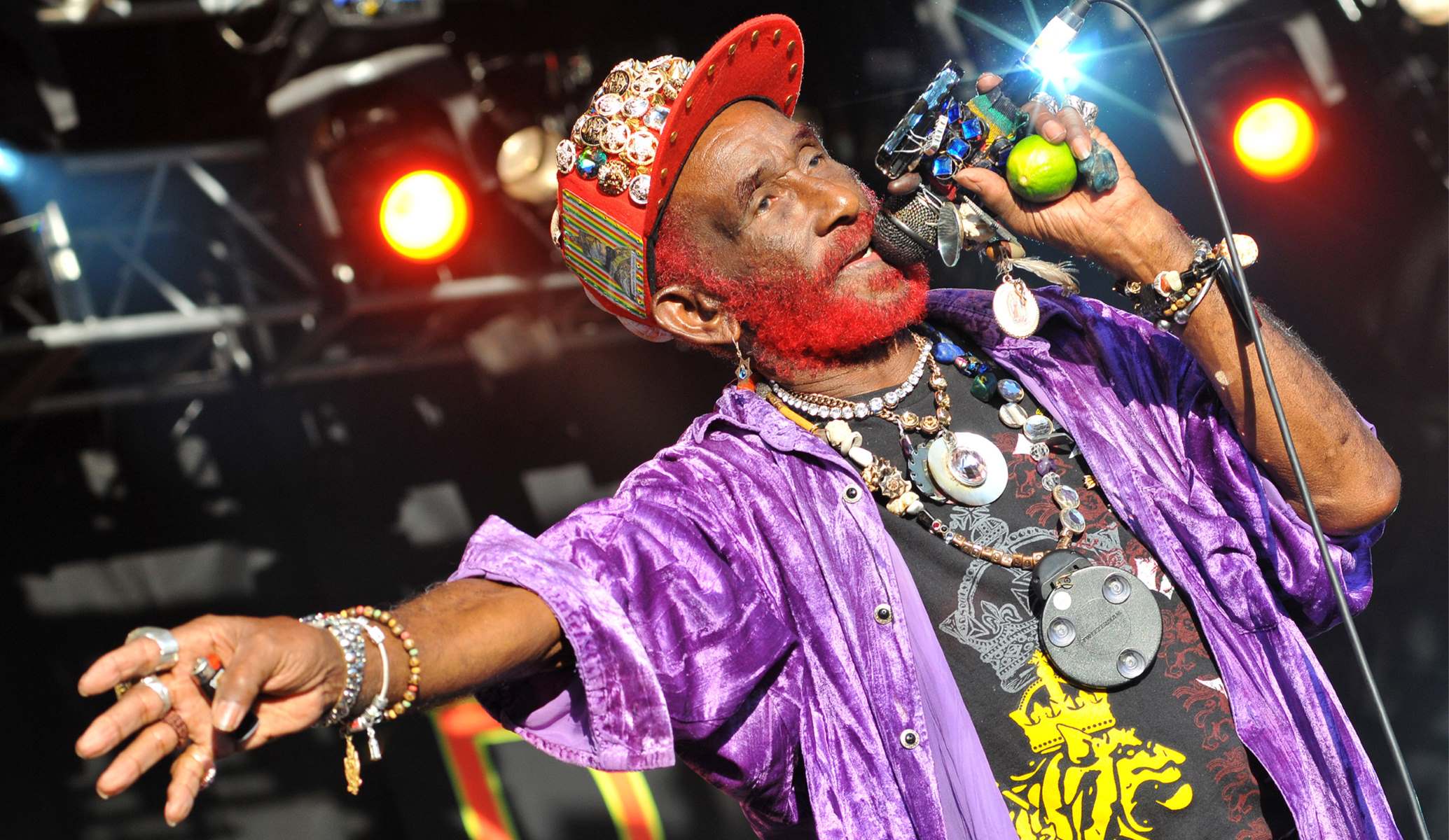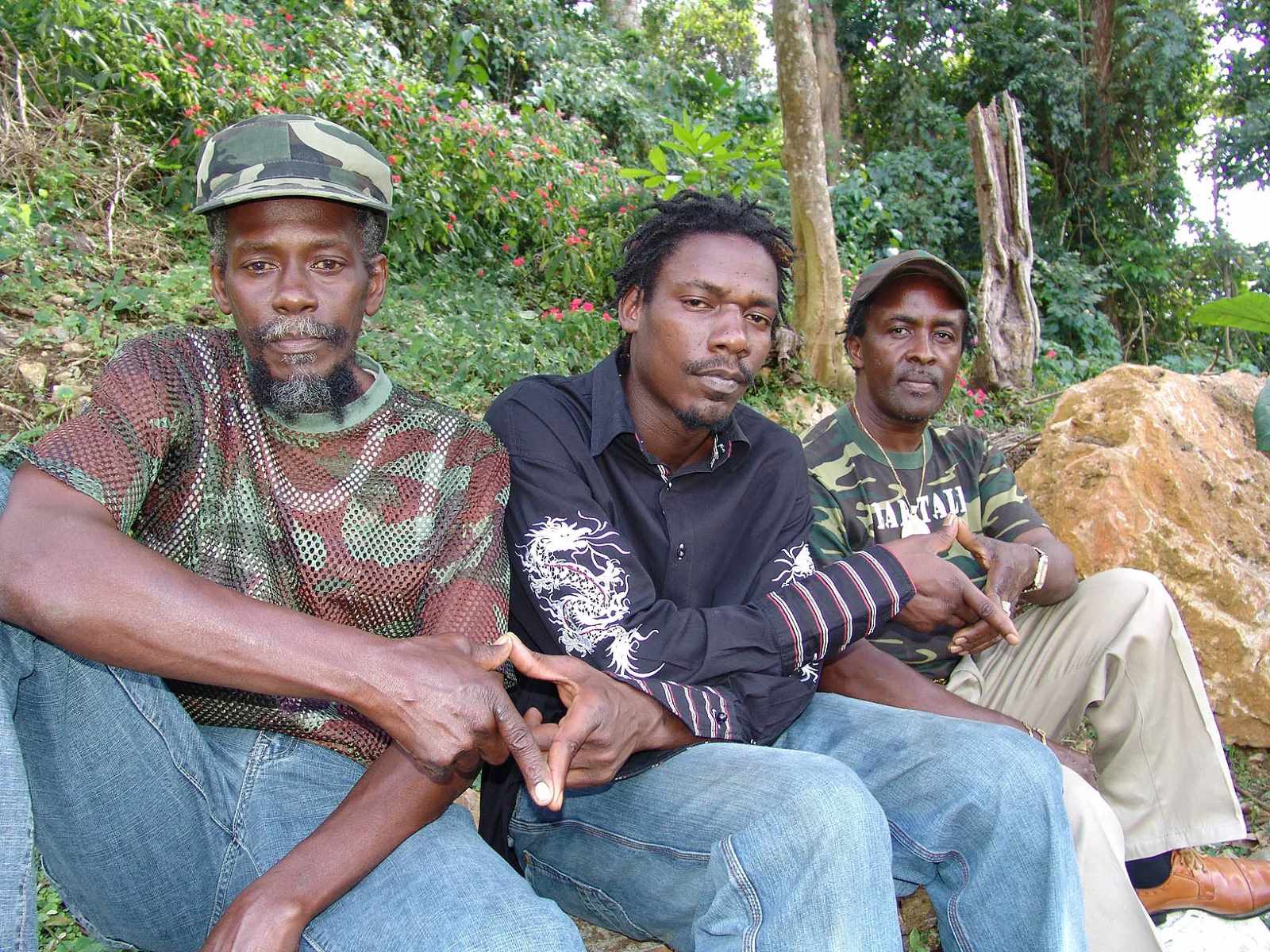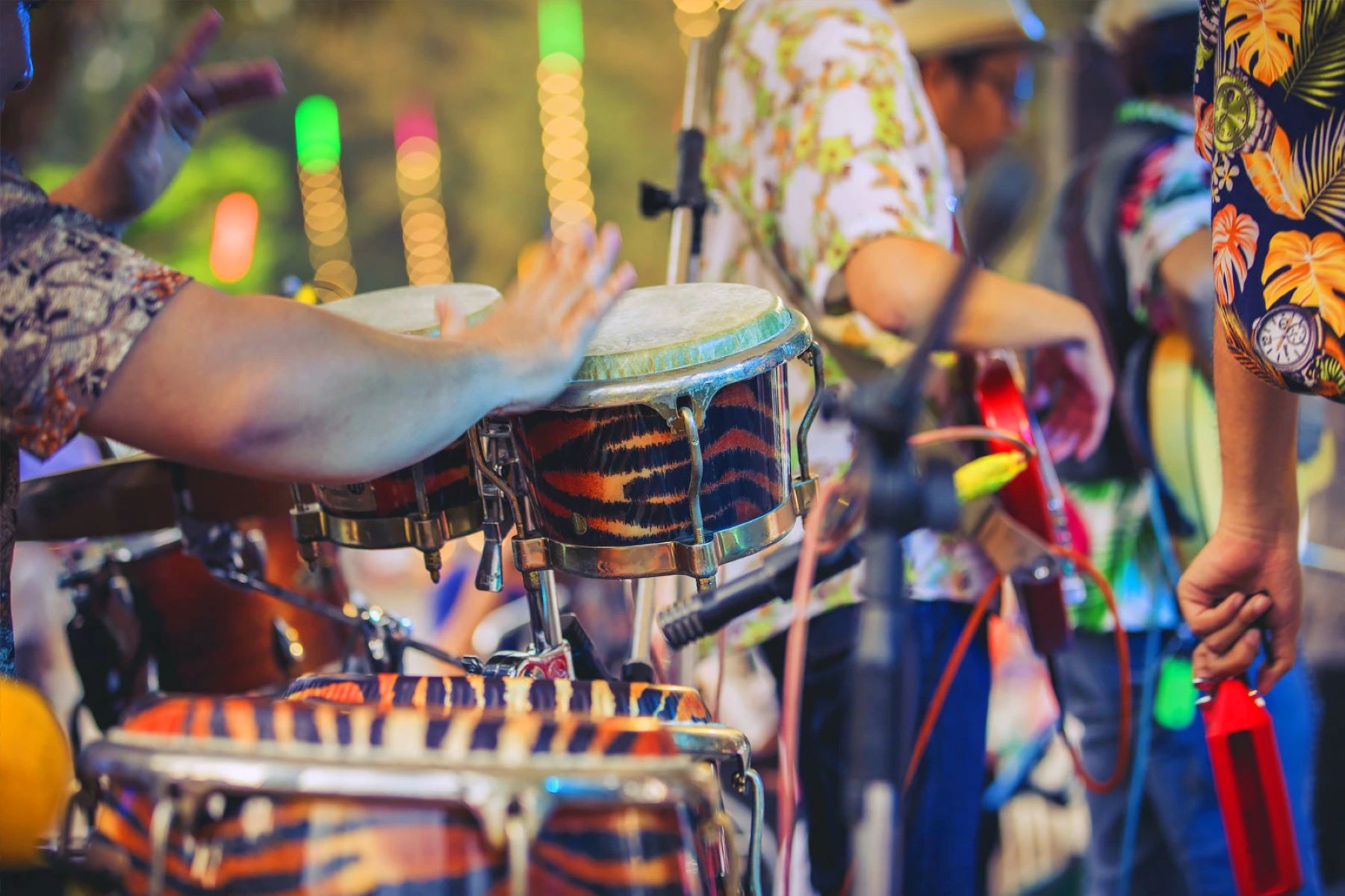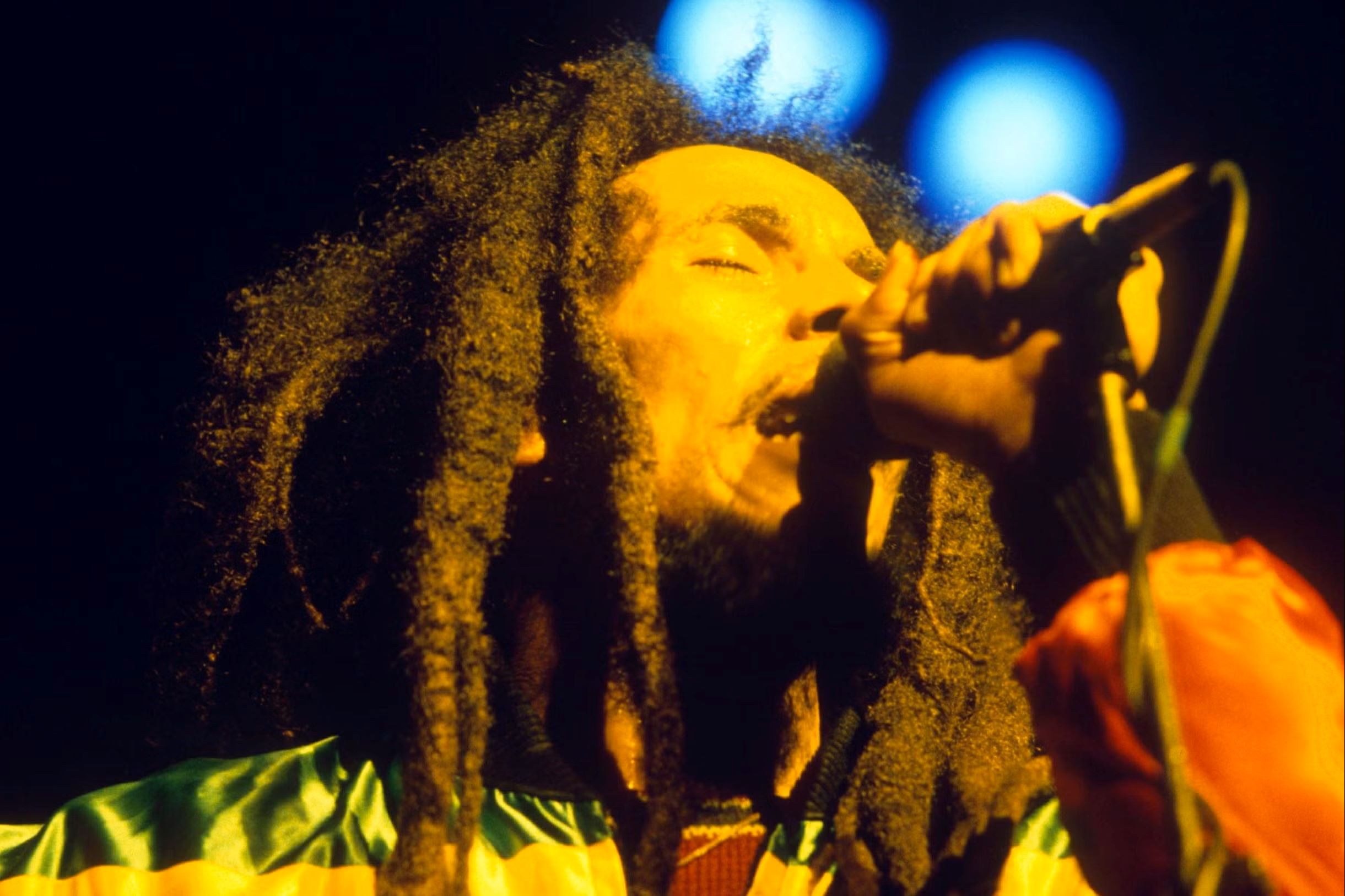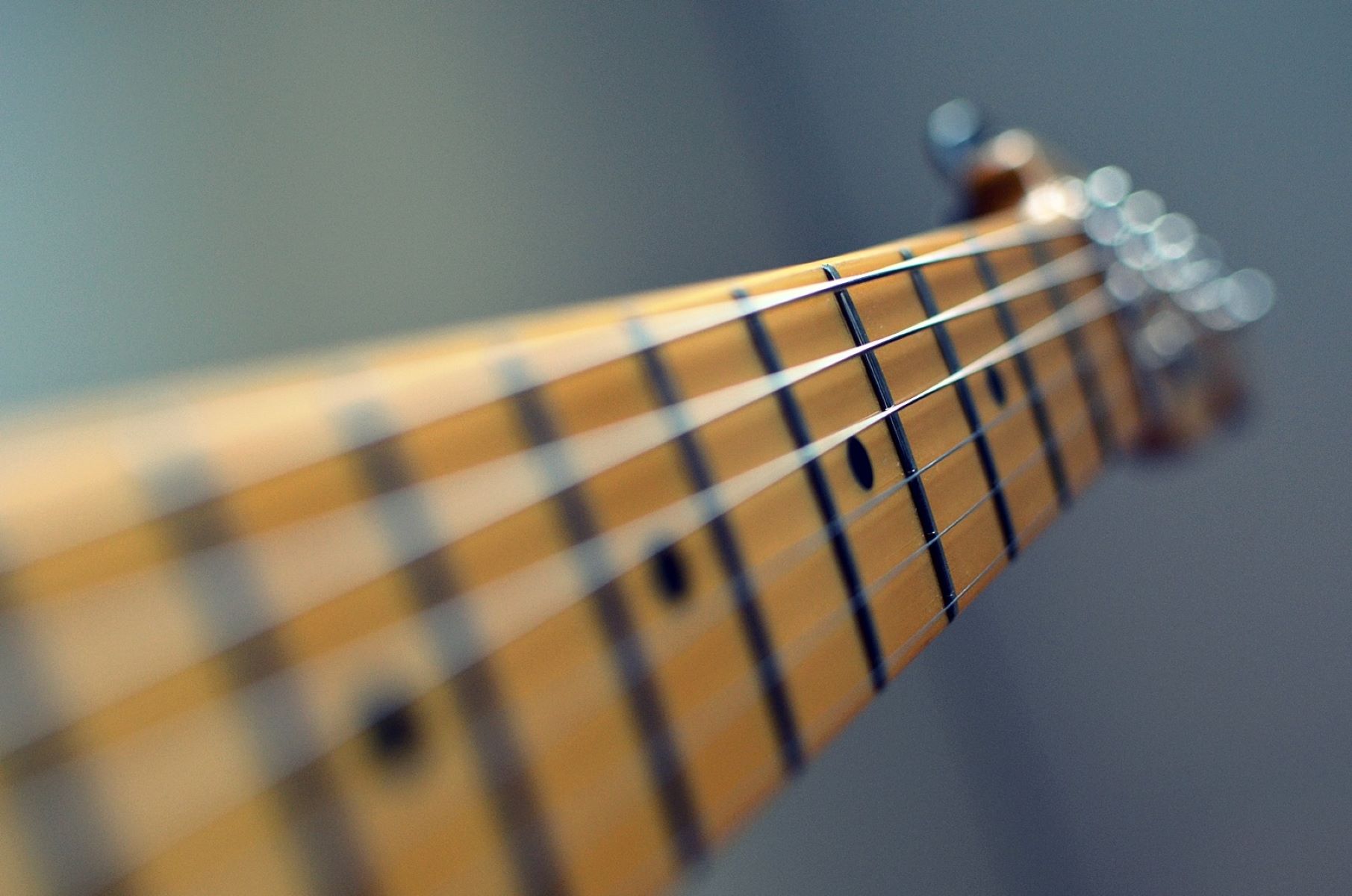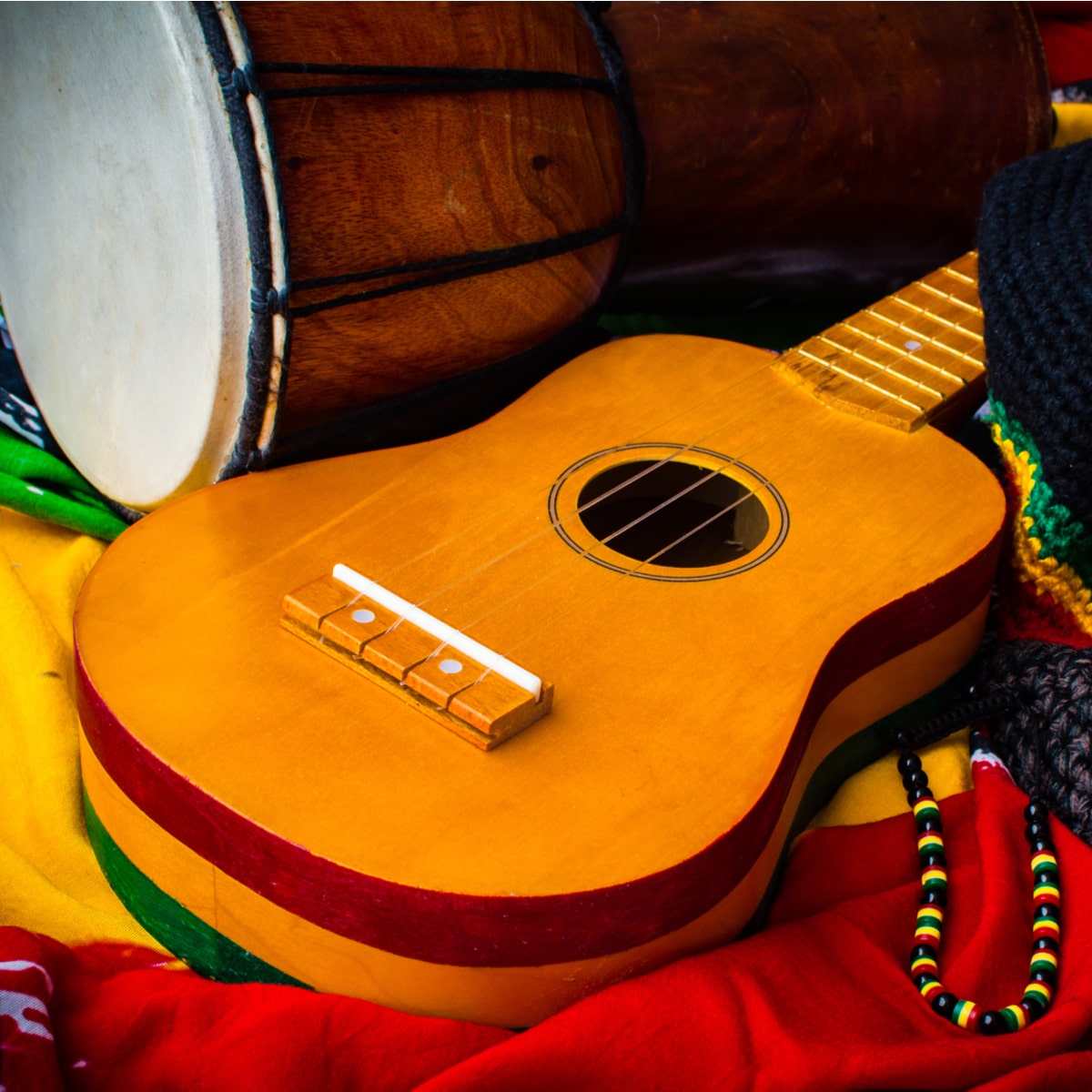

Reggae
What Is Dub In Reggae Music
Modified: January 22, 2024
Discover the origins and significance of dub in reggae music. Uncover how this subgenre transformed the genre with its unique mixing techniques and captivating rhythms.
(Many of the links in this article redirect to a specific reviewed product. Your purchase of these products through affiliate links helps to generate commission for AudioLover.com, at no extra cost. Learn more)
Table of Contents
Introduction
Reggae music, with its infectious rhythms and soulful lyrics, has captivated listeners around the world for decades. At the heart of this genre lies a subgenre called dub, which has carved its own unique space in the reggae music landscape. Dub adds a distinctive and experimental element to reggae, pushing the boundaries of traditional sound production.
In this article, we will delve into the world of dub in reggae music, exploring its definition, origins, techniques, and its impact on the wider musical landscape. Whether you are a dedicated reggae enthusiast or a curious music lover, join us on this journey to unravel the fascinating world of dub.
Dub is more than just a subgenre; it is an art form that emerged in the late 1960s and early 1970s in Jamaica. Created by a generation of innovative producers and sound engineers, dub revolutionized reggae music by manipulating and reshaping its key elements. It was a time of experimentation, where mixing desks became instruments and the studio became a laboratory for sonic exploration.
So what exactly is dub? In its essence, dub refers to the instrumental remix of reggae tracks, emphasizing the rhythmic and melodic elements while stripping away or reducing the vocal presence. This unique approach allows for a greater focus on the production work, bringing to the forefront the intricacies of the music itself.
The birth of dub can be traced back to the legendary Jamaican studios of the era, such as Studio One, Treasure Isle, and King Tubby’s studio. These pioneering producers, including King Tubby, Lee “Scratch” Perry, and Scientist, played a pivotal role in shaping the sound of dub and pushing the boundaries of what was possible within the realm of reggae music.
Through innovative techniques like “dubbing” – manipulating faders, adding echo and reverb, and utilizing creative sound effects – dub producers transformed simple reggae tracks into immersive sonic experiences. This experimentation gave birth to a wide range of iconic dub tracks that are celebrated and cherished to this day.
Join us as we embark on this sonic journey to explore the origins, techniques, and impact of dub in reggae music. From its humble beginnings in Jamaican studios to its influence on a wide array of musical genres, dub continues to make an indelible mark on the musical landscape.
So, get ready to dive into the deep basslines, mesmerizing echoes, and innovative production techniques that have made dub an essential part of reggae music.
Definition of Dub
Dub is a subgenre of reggae music that emerged in the late 1960s and early 1970s in Jamaica. It is characterized by its unique approach to sound production and remixing. In essence, dub involves stripping down reggae tracks to their instrumental components and adding creative effects, such as echo, reverb, and mixing techniques, to create a new sonic experience. Unlike traditional reggae songs, dub emphasizes the rhythm, basslines, and instrumental elements, often reducing or eliminating vocals.
At its core, dub is a form of musical experimentation and re-interpretation. Dub producers take existing reggae tracks and transform them into mesmerizing sonic landscapes. The focus is not only on the music itself but also on the production techniques and the artistic prowess of the engineers behind the mixing boards.
Dub removes the vocals from reggae tracks, allowing listeners to fully immerse themselves in the intricacies of the music. This absence of vocals creates an open space within the composition, giving room for the dub producer to showcase their creativity and manipulate the elements of the song. The result is a rich tapestry of sounds, with heavy echoing, delay effects, instrument solos, and atmospheric textures.
The term “dub” itself has multiple meanings and interpretations. It is believed to have originated from the practice of “dubbing” or adding effects to tracks during live performances in Jamaican sound systems. However, the term also reflects the idea of duplicating or copying tracks, as dub producers often worked with the original multitrack recordings of reggae songs.
Dub has evolved into various sub-genres and has had a significant impact on the wider music world. Its experimental nature and emphasis on sound manipulation have influenced genres like electronic music, hip-hop, and even rock. Today, dub artists and producers continue to push the boundaries of music production, experimenting with new techniques and incorporating modern technologies into their soundscapes.
In summary, dub is a subgenre of reggae music that emphasizes instrumental elements, sound production, and creative remixing. It is a genre that celebrates innovation, pushing the boundaries of traditional music production and immersing listeners in a captivating sonic journey.
Origins of Dub in Reggae Music
The origins of dub can be traced back to the vibrant music scene in Jamaica during the late 1960s and early 1970s. It was a time of cultural and musical revolution, with reggae music taking center stage. As reggae gained popularity, a group of innovative producers and engineers emerged, pushing the boundaries of traditional sound production and giving birth to the genre we now know as dub.
Dub’s roots can be found in the Jamaican practice of “versions” or “dubs.” These were instrumental interpretations of popular songs, which DJs used to chant over during sound system events. The versions allowed DJs to showcase their own unique style and interact with the crowd. This practice provided the foundation for dub, as producers began exploring the possibilities of creating instrumental versions of reggae tracks.
One of the key figures in the development of dub was King Tubby, a sound engineer and producer who worked at King Tubby’s Studio in Kingston, Jamaica. King Tubby’s innovative approach to sound engineering revolutionized the way music was produced. He experimented with mixing desks, adding echo and reverb effects, manipulating faders, and utilizing soundboards to create entirely new musical landscapes.
Another influential figure was Lee “Scratch” Perry, a producer known for his eccentricity and visionary approach to music. Perry worked at Studio One and later built his own studio called the Black Ark. He pushed the boundaries of traditional reggae production with his unconventional methods and psychedelic soundscapes. Perry’s collaborations with artists such as The Upsetters and Bob Marley helped solidify dub’s place in the reggae canon.
These pioneers of dub took existing reggae tracks and transformed them into instrumental compositions, showcasing the rhythm, basslines, and instrumentations in ways that hadn’t been explored before. They would often strip away or reduce the vocals, allowing the music itself to take center stage. Through their ingenious mixing techniques and creative use of effects, they created a distinct sonic aesthetic that became the hallmark of dub.
Alongside King Tubby and Lee “Scratch” Perry, other notable dub producers emerged during this time, including Scientist, Prince Jammy, and Errol Thompson. Each had their own unique style and approach to dub production, further expanding the boundaries of the genre.
The rise of dub coincided with a growing interest in sound system culture, where DJs and engineers would set up massive sound systems in outdoor venues, playing reggae music to large crowds. Dub tracks became a staple of these sound system events, captivating audiences with their heavy basslines and immersive sonic landscapes.
In summary, the origins of dub can be found in the innovative practices of Jamaican producers and engineers during the 1960s and 1970s. Their experimentation with sound engineering techniques, mixing desks, and effects paved the way for the birth of dub, a genre that pushed the boundaries of reggae music and forever changed the landscape of Jamaican and international music.
Techniques Used in Dub Production
Dub production is characterized by its innovative and experimental approach to sound manipulation. Dub producers employ a variety of techniques to transform reggae tracks into mesmerizing sonic landscapes. These techniques involve creative mixing, the use of effects, and the manipulation of various elements within the music.
One of the fundamental techniques used in dub production is the manipulation of the mixing board. Dub producers utilize the faders, knobs, and controls on the mixing console to shape the sound. By adjusting the levels of individual tracks, they can emphasize or de-emphasize certain instruments and create dynamic arrangements.
Effects play a crucial role in creating the distinctive sound of dub. Echo and reverb are commonly used to create a spacious and atmospheric sound. These effects give the music a sense of depth and dimension, immersing listeners in a captivating sonic experience. Delay is another effect often used, creating rhythmic patterns by repeating sounds with slight time gaps between each repetition.
Dub producers also experiment with panning, where they position musical elements within the stereo field. By distributing the instruments across the left and right channels, they can create a sense of movement and space in the mix.
Another technique employed in dub production is the use of EQ (equalization). Through careful manipulation of frequencies, dub producers can shape the tonal characteristics of individual instruments, enhancing or reducing specific frequency ranges. This allows them to bring out the desired elements and create a balanced and cohesive mix.
Dub producers often incorporate sound effects into their tracks to add texture and interest. These can include sirens, horns, vocal snippets, or even everyday sounds like footsteps or doors opening. The strategic placement of these effects within the music adds layers of depth and complexity.
The manipulation of the rhythm section is another key aspect of dub production. Producers may emphasize the bassline, adding weight and depth to the overall sound. They often accentuate drum patterns, adding extra fills and breaks for rhythmic impact. This rhythmic experimentation gives dub its distinctive groove and further enhances the overall listening experience.
Sampling is another technique that has become more prevalent in contemporary dub production. Producers may sample snippets of vocals, instruments, or other sounds and incorporate them into their tracks, adding an extra layer of creativity and sonic exploration.
It’s important to note that each dub producer has their own unique style and approach, resulting in a wide range of techniques and creative choices. The aim is to create a captivating and immersive sonic experience that pushes the boundaries of traditional reggae music.
In summary, dub production involves a range of techniques that enable producers to manipulate the sound, create atmospheric effects, and experiment with various elements of the music. Through innovative mixing, the use of effects, and creative choices, dub producers continue to shape the sonic landscape of reggae music.
Dub Pioneers in Reggae Music
The genre of dub revolutionized reggae music, and its development owes much to the pioneering work of visionary producers and engineers. These individuals, through their innovative techniques and sonic experimentation, shaped the sound of dub and left an indelible mark on the reggae music landscape.
One of the most influential figures in dub music is King Tubby. As a sound engineer and producer, Tubby is credited with inventing many of the techniques that define dub. Working at his studio in Kingston, Jamaica, he experimented with sound effects, reverbs, and delays, creating a unique sonic space in his recordings. King Tubby’s contributions to dub music not only influenced the genre but also had a profound impact on the wider music industry.
Lee “Scratch” Perry, known for his eccentricity and creativity, played a pivotal role in the development of dub. He worked with artists like The Upsetters and Bob Marley, creating innovative tracks that pushed the boundaries of traditional reggae. Perry’s use of unconventional studio equipment and his knack for manipulating sound resulted in groundbreaking dub productions that continue to inspire generations of musicians.
Scientist, also known as Hopeton Overton Brown, is recognized as one of the leading dub producers. He worked alongside King Tubby and developed his own unique style, known for its clarity and intricacy. Scientist’s meticulous attention to detail and use of advanced mixing techniques earned him a reputation as a dub pioneer, shaping the genre’s evolution and contributing to its popularity worldwide.
Another notable figure in dub music is Prince Jammy (later known as King Jammy). He rose to prominence as an engineer at King Tubby’s studio before establishing his own successful career as a producer. Prince Jammy’s collaborations with artists like Black Uhuru and Barrington Levy brought him acclaim, and his innovations in dub production continue to influence musicians to this day.
Errol Thompson, renowned for his work at the legendary Studio One, played a crucial role in shaping the sound of dub. His partnership with Joe Gibbs resulted in numerous classic dub recordings that showcased Thompson’s technical prowess and attention to detail. His contributions to the genre remain highly regarded and have left an enduring impact on reggae music.
These dub pioneers and others like them pushed the boundaries of music production, transforming reggae tracks into immersive soundscapes and revolutionizing the way music was recorded and mixed. Their experimentation with effects, innovative use of studio equipment, and dedication to sonic exploration paved the way for the evolution of dub as a genre.
It is important to recognize and appreciate the contributions of these dub pioneers, as their work not only shaped the course of reggae music but also influenced a wide range of musical genres. From electronic music to hip-hop and beyond, the impact of dub pioneers can be felt throughout the musical landscape, solidifying their place as true visionaries and trailblazers.
In summary, the dub pioneers in reggae music, such as King Tubby, Lee “Scratch” Perry, Scientist, Prince Jammy, and Errol Thompson, played a vital role in shaping the genre. Through their innovative techniques, experimentation, and dedication to sonic exploration, they left a lasting legacy that continues to influence and inspire artists to this day.
Dub as a Subgenre of Reggae Music
Dub, often considered a subgenre of reggae music, emerged in the late 1960s and early 1970s as a distinct and innovative style within the reggae genre. Dub takes the foundational elements of reggae, such as the rhythm, basslines, and instrumentation, and places them at the forefront of the music. With its emphasis on instrumental prowess and creative sound production techniques, dub has carved its own unique space in the reggae music landscape.
What sets dub apart from traditional reggae is its creative approach to remixing and production. Dub producers take existing reggae tracks and transform them into instrumental compositions that accentuate the rhythmic groove and instrumental interplay. By stripping away or reducing the vocals, dub highlights the intricate musical elements of the song, allowing listeners to fully appreciate the depth and complexity of the music itself.
One of the defining characteristics of dub is its use of effects and sound manipulation. Producers experiment with echo, reverb, delay, and other effects to create a distinct sonic aesthetic. These effects give dub its spacious and atmospheric sound, immersing listeners in a captivating sonic journey.
In addition to effects, dub producers also employ various mixing techniques to shape the sound. They adjust the levels of individual instruments, pan them across the stereo field, and apply equalization to enhance specific frequencies. This meticulous attention to detail adds depth and texture to the music, creating a dynamic and engaging listening experience.
Dub’s focus on instrumental elements and sound production techniques has allowed it to become a breeding ground for musical experimentation. Dub producers often push the boundaries of traditional reggae, incorporating elements from other genres such as jazz, funk, and electronic music. This fusion of influences adds a unique and diverse flavor to dub, expanding its sonic palette and keeping the genre fresh and exciting.
Dub’s impact extends beyond the realm of reggae music. Its innovative production techniques have influenced a wide range of genres, including electronic music, hip-hop, and experimental music. The use of effects, sampling, and sound manipulation techniques that originated in dub have become fundamental tools in modern music production.
The popularity of dub has also led to the emergence of countless dub remixes and dub albums featuring collaborations between dub producers and reggae artists. These releases showcase the creativity and adaptability of dub, breathing new life into familiar reggae tracks and offering fresh perspectives on the music.
In summary, dub is a subgenre of reggae music that emphasizes instrumental elements and sound production techniques. With its focus on creative remixing, effects, and meticulous mixing, dub has its own unique identity within the reggae genre. Its influence extends beyond reggae, shaping the landscape of modern music production and serving as a vehicle for musical experimentation and innovation.
Influence of Dub on Other Genres
The influence of dub extends far beyond the realm of reggae music, reaching and shaping a wide range of musical genres. Its innovative production techniques and sonic aesthetics have left an indelible mark on the musical landscape, influencing artists and producers across various genres. Let’s explore the impact of dub on some of these genres.
Electronic music is one genre that has been heavily influenced by dub. The use of effects and sound manipulation techniques that originated in dub have become fundamental elements in electronic music production. Dub’s emphasis on spaciousness, atmospheric textures, and rhythmic grooves laid the foundation for genres like dubstep, drum and bass, and ambient music. Artists in the electronic music scene often draw inspiration from dub, incorporating its sonic elements into their tracks and remixes.
Hip-hop is another genre that has been profoundly influenced by dub. In the early days of hip-hop, DJs would sample dub tracks and incorporate them into their mixes, using the dub effects and rhythms as the backbone of their beats. This practice established a connection between dub and hip-hop, shaping the production style and sound of the genre. Today, dub influence can still be heard in the booming basslines, echo effects, and sampling techniques used in hip-hop music.
Experimental music owes a debt of gratitude to dub. The genre’s willingness to push boundaries and explore unconventional sonic territories aligns closely with the ethos of experimental music. Dub’s use of effects, manipulation of sound, and emphasis on texture and atmosphere have inspired experimental musicians to take their sonic explorations to new heights.
Rock music has also felt the impact of dub. Bands throughout the decades have incorporated dub-inspired techniques into their music. From the dub-infused reggae-rock of The Clash to the psychedelic dub elements in Pink Floyd’s music, the influence of dub can be heard in the layers of ambiance and subtle effects that enhance the rock sound.
Furthermore, dub has had a significant impact on genres like trip-hop, techno, and even pop music. Its influence can be heard in the production choices, mixing techniques, and use of effects that add depth and space to these genres’ soundscapes.
The continuous cross-pollination between dub and other genres demonstrates the versatility and lasting impact of the dub aesthetic. The influence of dub goes beyond stylistic preferences; it lies in the production techniques, creative choices, and sonic possibilities that have become ingrained in modern music production.
In summary, dub’s influence extends to a diverse range of genres, including electronic music, hip-hop, experimental music, rock, and more. Its innovative production techniques, effects, and focus on spaciousness and atmospheric textures have permeated the musical landscape, shaping the sound and production styles of countless artists and genres.
Contemporary Dub Music Scene
The dub music scene continues to thrive and evolve, maintaining its innovative spirit while embracing new technological advancements and influences from various musical genres. Contemporary dub artists and producers from around the world are carrying the torch, pushing the boundaries of the genre and keeping its spirit alive.
In recent years, a new wave of dub artists has emerged, fusing traditional dub techniques with modern production styles. These artists draw inspiration from the pioneers of dub while infusing their own unique flavors and influences. They experiment with electronic music production tools, incorporate elements of jazz, funk, and world music, and often collaborate with a diverse range of musicians to create refreshing and dynamic dub compositions.
One prominent figure in the contemporary dub music scene is Mad Professor. With a career spanning several decades, he has established himself as a master of modern dub production. Mad Professor’s diverse discography showcases his ability to blend dub with genres like electronica, hip-hop, and even classical music, demonstrating the genre’s versatility and adaptability.
Another notable contemporary dub artist is Adrian Sherwood. Known for his work as a producer and engineer, Sherwood has been at the forefront of the dub and experimental music scene since the late 1970s. His collaborations with artists from various genres, including industrial, punk, and reggae, have helped keep the dub sound relevant and fresh.
Additionally, internationally acclaimed bands like Dub FX, Groundation, and Thievery Corporation have incorporated dub elements into their music. These artists seamlessly blend elements of dub with reggae, hip-hop, and electronic music, captivating audiences with their energetic live performances and innovative studio productions.
The contemporary dub scene is not limited to established artists; it also encompasses a vibrant underground community of producers and musicians. These talented individuals explore the outskirts of dub, experimenting with glitchy electronic textures, unconventional rhythms, and surreal soundscapes. Their boundary-pushing approaches to dub music push the genre into new and uncharted territories.
Furthermore, festivals and events dedicated to showcasing dub music have gained popularity worldwide. Dub festivals provide a platform for both established and emerging artists to share their music, connect with like-minded individuals, and celebrate the rich history and evolution of dub. Such events have become a hub for dub enthusiasts, allowing the community to come together and nurture the growth of this constantly evolving genre.
In summary, the contemporary dub music scene is a vibrant and diverse community of artists, producers, and enthusiasts who continue to push the genre’s boundaries. Through their innovative production techniques, fusion of musical influences, and collaborations across various genres, they ensure the ongoing evolution and relevance of dub music in today’s musical landscape.
Conclusion
Dub music, with its experimental sound production techniques and emphasis on instrumental elements, has made a significant impact on the world of music. From its humble origins in the studios of Jamaica to its influence on a wide range of genres, dub has carved its own unique space within the reggae music landscape and beyond.
Through the innovative work of dub pioneers like King Tubby, Lee “Scratch” Perry, and Scientist, the genre has expanded the possibilities of music production. Their creative mixing, use of effects, and manipulation of sound have shaped the sonic landscape of dub, creating mesmerizing and immersive experiences for listeners.
The influence of dub can be felt across various genres, from electronic music to hip-hop, experimental music to rock. Its innovative techniques, such as echo, reverb, and rhythmic manipulation, have become fundamental tools in contemporary music production.
The contemporary dub music scene continues to thrive, with artists like Mad Professor, Adrian Sherwood, and others pushing the boundaries and incorporating modern influences into their compositions. Their exploration of new sounds and styles ensures the continued evolution of dub music.
Furthermore, dub festivals and events provide a platform for artists, producers, and enthusiasts to come together, celebrate the genre, and nurture its growth. These gatherings affirm the community’s dedication to preserving the spirit of dub while embracing the limitless possibilities of its future.
In conclusion, dub music remains an integral part of the reggae genre and the wider musical landscape. Its experimentation, sonic exploration, and innovative production techniques have left an indelible mark on music production as a whole. Whether it’s the heavy basslines, hypnotic echoes, or atmospheric textures, the sound of dub continues to captivate and inspire listeners around the world, showcasing the power of artistic vision and the endless possibilities of creative expression.


